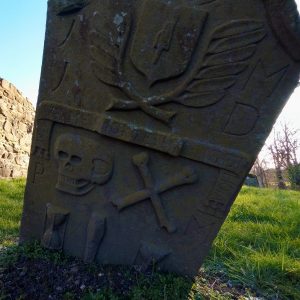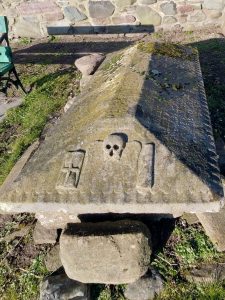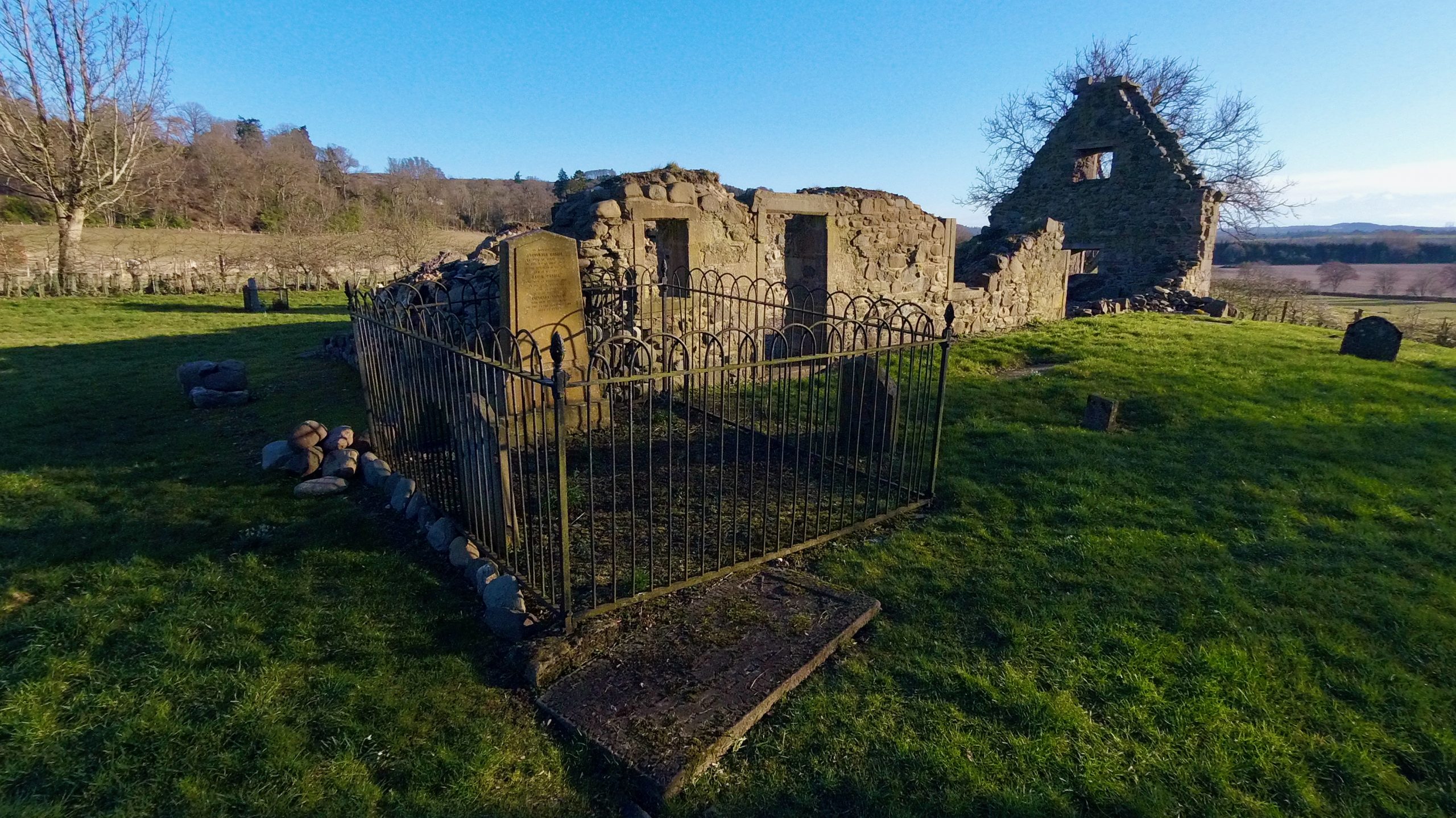Woke up to another cloudless sky and a quick low level run prior to the journey home, where I believe there has been a bit of snow.

Had a look around the burial-ground of Rait with its roofless ruined church and several interesting 18th-century gravestones. Although the existing structure likely dates from the post-Reformation period, there is a possibility that earlier elements may have been incorporated into the building. A chapel of the priory of Scone was documented to have existed in Rait around c.1120 and the township may have become a parish in the 15th century. However, in the 17th century, Rait was joined with Kilspindie parish, after which the church presumably fell into a state of disrepair1‘Rait, Old Parish Church and Churchyard | Canmore’. 2023. Canmore.org.uk <https://canmore.org.uk/site/30442/rait-old-parish-church-and-churchyard> [accessed 10 March 2023].
Some of the gravestones contain ‘Memento mori‘ symbols. These were popular until the end of the eighteenth century. Literally translated as ‘remember to die’, the symbols are a reminder of the certainty of death and the importance of living a devout life. Common symbols include the skull, or ‘death’s head’, with or without crossbones, an hourglass (representing that our time on earth is finite and should be spent well), hearts and pairs of wings denoting the soul’s final journey to Heaven2Ochata, Mary-Ann. “Hidden Histories”. Page 276. Frances Lincoln Ltd. 2016..

Several of the gravestones in the burial-ground feature Memento Mori symbols, which were prevalent until the late 18th century. These symbols — the name literally translates as ‘remember to die’ — serve as a reminder of the inevitability of death and the significance of leading a pious life. Examples of common symbols include the skull (referred to as ‘death’s head’) with or without crossbones, an hourglass (representing the limited time we have on earth and the need to use it wisely), as well as hearts and pairs of wings, signifying the soul’s ultimate journey to Heaven.
One chest tomb also had Memento Mori symbols. These are raised boxes built with carved stone walls and a grave slab that acts as the ‘lid’ on top. However, the body of the deceased is usually not inside the box. Instead, the tomb is generally an empty space, and the body is buried in the ground beneath it. The oldest existing chest tombs date back to the 1300s, but most of them were built from the 1600s onwards. Typically, the weight of the lid is an indication of an earlier era, whereas a thinner lid and better-preserved carvings suggest a later date3Ochata, Mary-Ann. “Hidden Histories”. Page 276. Frances Lincoln Ltd. 2016..
- 1‘Rait, Old Parish Church and Churchyard | Canmore’. 2023. Canmore.org.uk <https://canmore.org.uk/site/30442/rait-old-parish-church-and-churchyard> [accessed 10 March 2023]
- 2Ochata, Mary-Ann. “Hidden Histories”. Page 276. Frances Lincoln Ltd. 2016.
- 3Ochata, Mary-Ann. “Hidden Histories”. Page 276. Frances Lincoln Ltd. 2016.

Leave a Reply